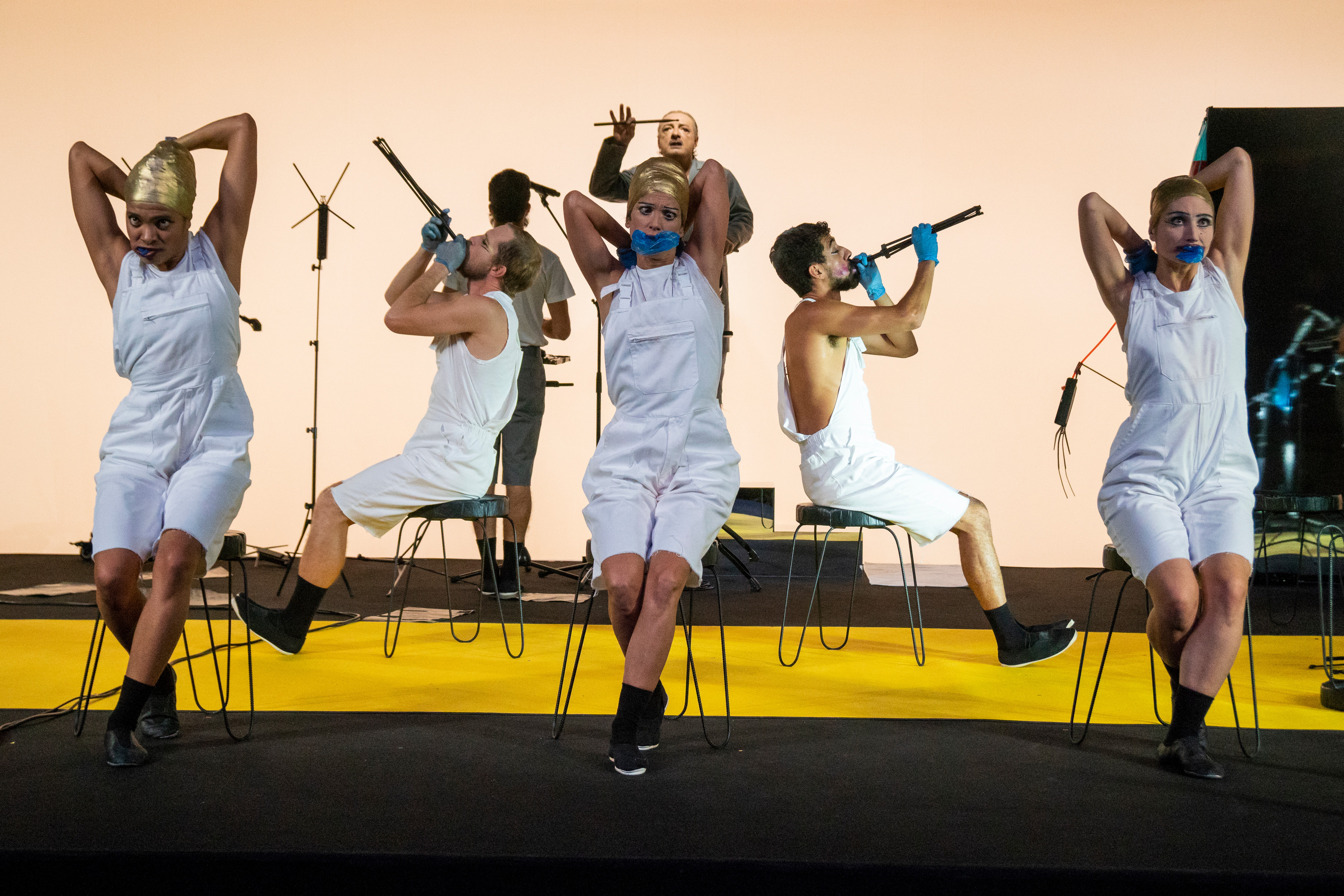Words by Giordana Patumi.
Bacchae: Prelude to a Purge makes its US premiere in BAM Artistic Director David Binder’s first Next Wave season. Winner of the Venice Biennale Silver Lion for Dance in 2018, Marlene Monteiro Freitas presets her first big scale project.
More than Dionysus’s inebriation, in this choreographic exploration, stressed by noisy music, deliberately cacophonic, it is easier to ‘breathe’ the mathematical precision of Apollo. Marlene Monteiro Freitas demonstrates efficiency and awareness in her strategies and body language in every choreographic choice, while building a mechanism all too precise under the false appearance of the Bacchanal.
The audience might not discover much around Euripides’ The Bacchae but that won’t matter much once Freitas’s carnival grotesque onstage world is unfolded. Moreover, the expressionist matrix is certainly one of the best elements of Freitas’ work, underlined by heavy make-up, dysmorphism, and a certain horrifying taste.

The colors, costumes and make-up, the use of lights and the musical and vocal distortions are certainly bitter, as well as the entire ensemble, which is strong and precise. The performers, wearing white, blues and gold, are seven dancers (including the choreographer), five trumpet-players and one actor-narrator. They all dance, sing and speak and the boundaries of what kind of performer they are almost removed. The stage is almost bare, the main props are simple music stands, manipulated and distorted to become a multitude of different objects throughout the entire performance. Filling the space are black stools, a mirror and a small platform in the back.
The ugly figure is as important as the beautiful; and here seems to sublimate in the grotesque only at times, especially, when the music assumes pop attitudes unbalanced by deliberately kitsch images.
Far from the joyful Dionysian dance that should lead to the tragic catharsis, here the scenes follow one another, every now and then choral and sometimes like solos. It’s without a logical, sequential continuity and an authentic crescendo which leads to an emotional climax guiding to a real purification. As explained in the subtitle, it’s more purge than purification.
The music choices are ingenious and follow the parade/performance. The trumpets often break into delicate music passages. A great scene is when the dancers respond to the music played by the trumpets (a bossa nova tune) with self-made horns created from a long piece of green plastic

and a pipe. The result is hilarious. At times, speeches are also addressed to the audience, such as a Pasolini poem “Io sono una forza del passato.” (“Mostruoso è chi e nato dale viscere di una donna morta” — The one born of a dead woman is a monster.) A real crescendo is visible when the Bolero is played and recreates an obsessive atmosphere typical of the Ravel cult and perhaps of a Dionysian orgy.
In the piece, it seems that sex (the central theme of the work) is reduced to a compulsive act, emptied of meaning and at the same time reconverted to its primordial meaning: reproduction. A video documentary is projected showing a woman giving birth. With the help of the dance – which the audience follows with growing enthusiasm – Freitas probably wants us to remember that childbirth is a painful act, and is the result of violence intrinsic to the human nature.
Lost and shocked whilst exiting the Harvey theatre, the audience might feel confused about what Freitas wanted to display with her vision of Euripides’ Bacchae. I went back home with a sentiment of having seen something without any idea of what was going on, and loved it all the same time; twisted feelings of joy and pain, relief and scariness, emptied and purged.
Header image: Stephanie Berger
Marlene Monteiro Freitas trained with Teresa De Keersmaeker and performed for Emmanuelle Huynh, Loïc Touzé and Boris Charmatz. She began developing her artistic work in 2010 and co-founded P.OR.K production company in Lisbon.